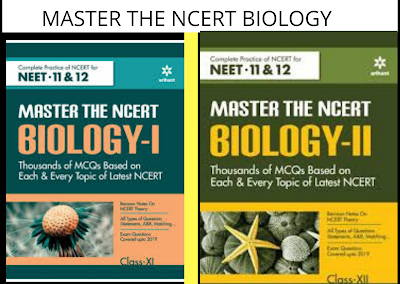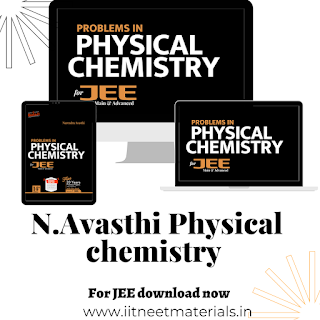SHORT NOTES ON CELL UNIT OF LIFE Or NCERT quick revision OF CELL UNIT OF LIFE Part 3
Cell quick revision
Cell unit of life notes part 3 , Ncert xtract, Short notes on cells unit of life part 3, IMPORTANT point of cell unit of life 3 ncert quick revision on cell unit of life
THE ENDOMEMBRANE SYSTEM ----->
I hope you like short notes on cell unit of LIFE which help to understand ncert at your fingertips and help to crack neet aiims, All this point are directly extracted from ncert like ncert Quick revision
include endoplasmic reticulum (ER),
golgi complex, lysosomes and vacuoles.
54. Mitochondria, chloroplast and
peroxisomes are not considered as part of
the endomembrane system.
I have try my best to add all point of ncert for neet aiims .Short notes help you to quick revision of cell unit of life and help to score more in neet exam
It's like all ncert books point to help you. For quick revision on cell unit of life
55. Endoplasmic Reticulum (ER) ------>
Network or reticulum of tiny tubular
structures ; Scattered in the cytoplasm
Divides the intracellular space into two distinct
compartments, i.e., luminal (inside ER) and
extra luminal (cytoplasm) compartments.
If bearing ribosomes on their surface is called
rough endoplasmic reticulum (RER).
In the absence of ribosomes they appear
smooth ( smooth endoplasmic reticulum)
56. RER is frequently observed in the cells
actively involved in protein synthesis
and secretion.
They are extensive and continuous with the
outer membrane of the nucleus.
57. The smooth endoplasmic reticulum is the
major site for synthesis of lipid.
In animal cells lipid-like steroidal hormones
are synthesised in SER.
I hope you like short notes on cell unit of LIFE which help to understand ncert at your fingertips and help to crack neet aiims, All this point are directly extracted from ncert like ncert Quick revision
58. GOLGI BODIES ------->
Camillo Golgi (1898) first observed
Consist of many flat, disc-shaped sacs -------->
Cisternae [0.5µm to 1.0µm diameter]
The Golgi cisternae are concentrically arranged
near the nucleus
Have Polarity ------> Distinct convex cis or
the forming face and concave trans or
the maturing face.
The cis and the trans faces of the organelle are
entirely different, but interconnected.
Principally performs the function of packaging
materials, to be delivered either to the intra-
cellular targets or secreted outside the cell.
Materials to be packaged in the form of
vesicles from the ER fuse with the cis
face of the golgi apparatus and move
towards the maturing face. This
explains, why the golgi apparatus
remains in close association with the
endoplasmic reticulum.
59. Protein Modification in Cell ------->
Proteins synthesised by ribosomes on the
endoplasmic reticulum are modified in the
cisternae of the Golgi apparatus before they
are released from its trans face.
Golgi apparatus-------->
important site of
formation of glycoproteins & glycolipids.
60. Lysosomes ------->
Membrane bound vesicular structures
Formed by the golgi apparatus.
Very rich in almost all types of hydrolytic
enzymes; Optimally active at the acidic pH.
Enzymes are capable of digesting
carbohydrates, proteins, lipids and
nucleic acids.
61. The vacuole ------->
Membrane-bound space found in the
cytoplasm.
It contains water, sap, excretory product and
other materials not useful for the cell.
The vacuole is bound by a single
membrane called tonoplast.
In plant cells the vacuoles can occupy up to 90
per cent of the volume of the cell.
In plants, the tonoplast facilitates the transport
of a number of ions and other materials
against concentration gradients into the
vacuole, hence their concentration is
significantly higher in the vacuole than in the
cytoplasm.
I have try my best to add all point of ncert for neet aiims .Short notes help you to quick revision of cell unit of life and help to score more in neet exam
It's like all ncert books point quick revision to help you.
And I hope you are enjoying it pls comment below if you like this
In Amoeba -------> The contractile vacuole is
important for excretion.
In many cells, as in protists, food vacuoles are
formed by engulfing the food particles.
62. Mitochondria features ------>
Unless specifically stained, are not easily
visible under the microscope.
The number of mitochondria per cell ------->
depending on the physiological
In terms of shape and size also, considerable
degree of variability is observed.
Typically it is sausage-shaped or cylindrical
Having a diameter of 0.2-1.0µm (average
0.5µm) and length 1.0-4.1µm.
Double membrane-bound structure
The outer membrane and the inner membrane
dividing its lumen distinctly into two aqueous
compartments, i.e., the outer compartment
and the inner compartment.
The inner compartment is called the matrix.
The outer membrane forms the continuous
limiting boundary of the organelle.
Double membrane-bound structure
The outer membrane and the inner membrane
dividing its lumen distinctly into two aqueous
compartments, i.e., the outer compartment
and the inner compartment.
The inner compartment is called the matrix.
The outer membrane forms the continuous
limiting boundary of the organelle.
The inner membrane forms a number of
infoldings called the cristae (sing.:
crista) towards the matrix .
The cristae increase the surface area.
The two membranes have their own specific
enzymes associated with the mitochondrial
function.
Mitochondria are the sites of aerobic
respiration.
They produce cellular energy in the form
of ATP, hence they are called ‘power
houses’ of the cell.
The matrix also possesses single circular DNA
molecule, a few RNA molecules, ribosomes
(70S) and the components required for the
synthesis of proteins.
The mitochondria divide by fission.
63. PLASTIDS----->
are found in all plant cells and in euglenoides.
Easily observed under the microscope
Bear specific pigments ----> imparting
specific colours to the plants.
Based on the type of pigments ------>
chloroplasts, chromoplasts &
leucoplasts.
The chloroplasts contain chlorophyll and
carotenoid pigments -------> Photosynthesis.
In the chromoplasts fat soluble carotenoid
pigments like carotene, xanthophylls and
others are present. This gives the part of the
plant a yellow, orange or red colour.
The Leucoplasts --------> the colourless plastids ;
stored nutrients:
Leucoplast types -------> Amyloplasts store
carbohydrates (starch), e.g., potato;
elaioplasts store oils and fats whereas the
aleuroplasts store proteins.
64. Chloroplasts of the green plants
found in the mesophyll cells of the leaves.
Length (5-10µm) and width (2-4µm).
One per cell of the Chlamydomonas, a green
alga to 20-40 per cell in the mesophyll.
Double membrane bound;
inner chloroplast membrane is
relatively less permeable.
The space limited by the inner membrane of
the chloroplast is called the stroma
| Short notes on cell unit of LIFE |
Visit now |
| Short notes part 1 |
link |
| Short notes part 2 |
link |
| Short notes part 3 |
link |
| Short notes part 4 |
link |



